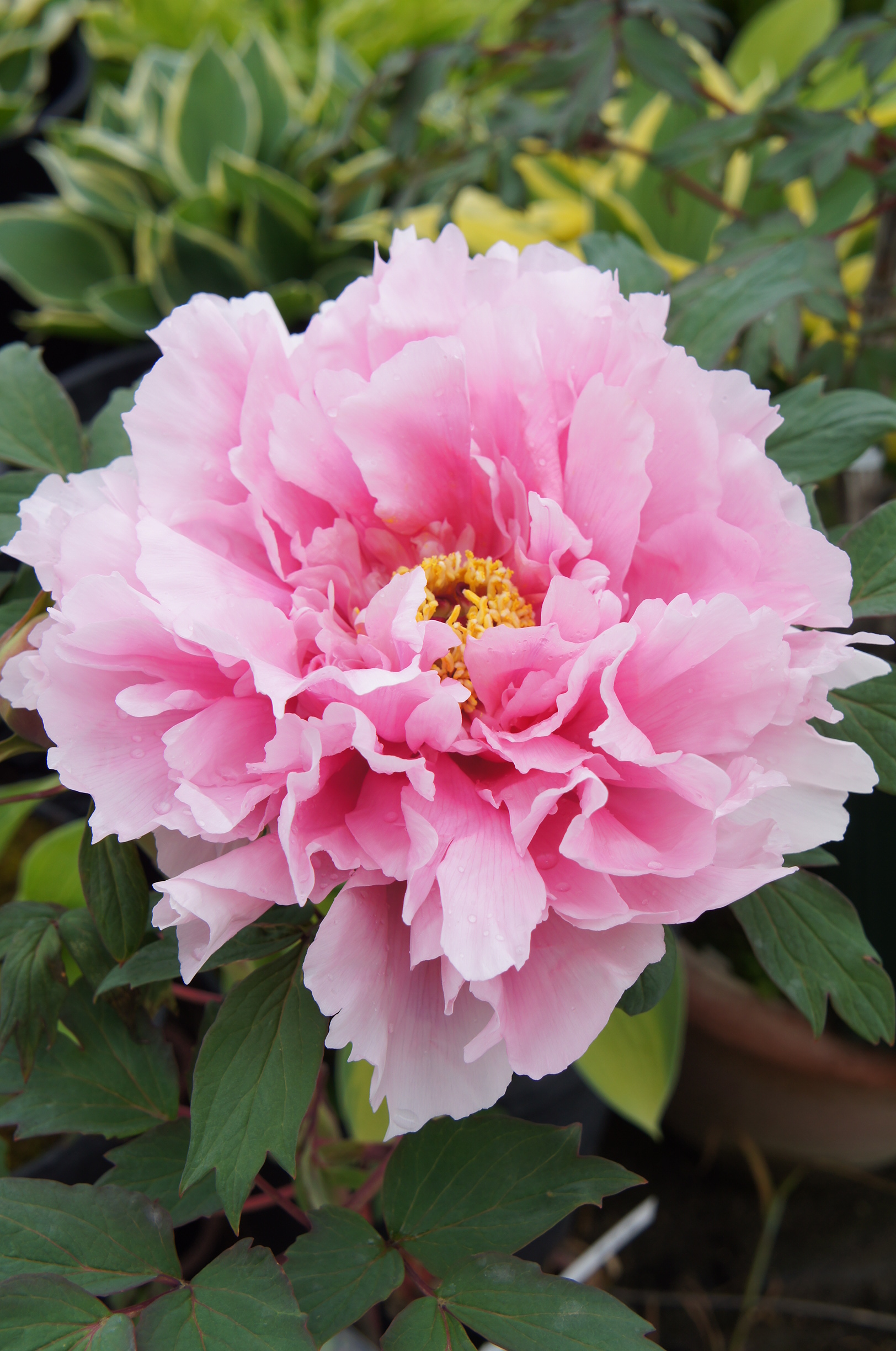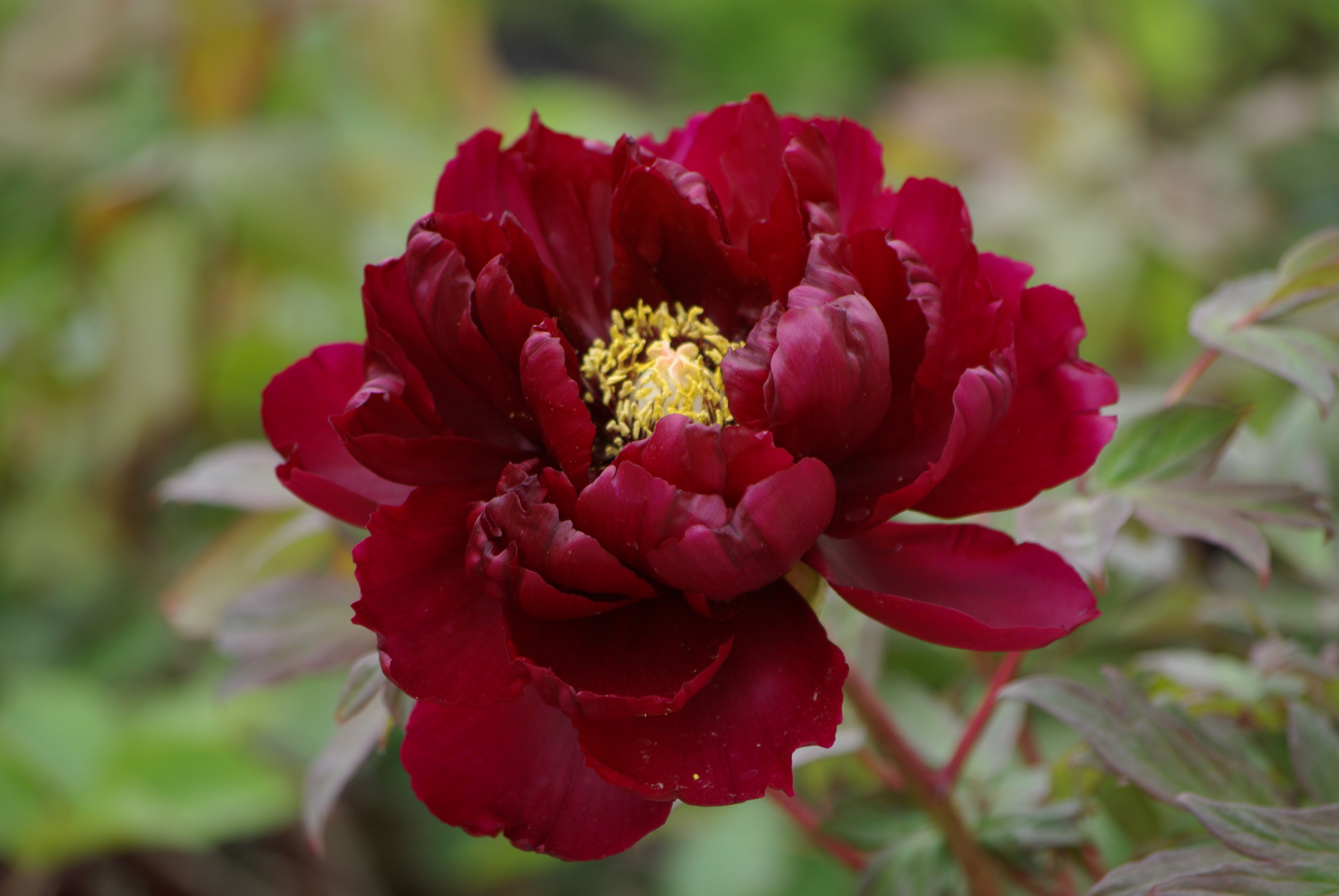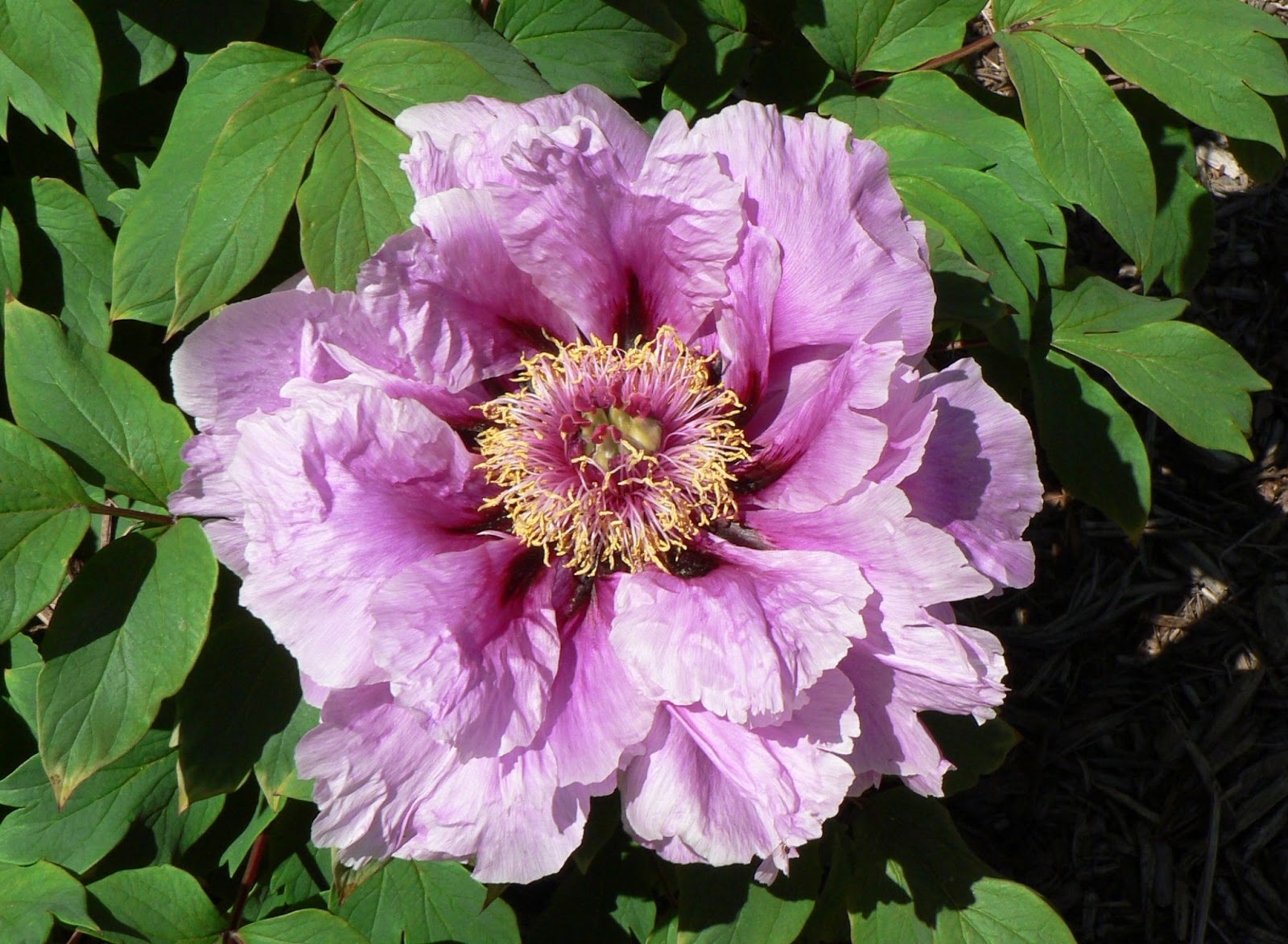Visit My Garden Japanese Tree Peonies at Olbrich
When depicted in art and poetry, tree peonies represent good fortune as well as a righteous and noble spirit. The majority of Japanese tree peonies share a number of characteristics. They bloom later in the tree peony season, after the Chinese tree peonies. Flowers tend to be large (8-10'' diameter), semi-double form, with bright, vibrant colors.

Primrose Hall Paeonia suffruticosa 'Shunkoju' (Japanese Tree Peony)
Consisting of 49 different varieties of Japanese tree peony, the collection highlights six different colors, and each variety was grown by a small family nursery on the island of Daikon-Shima in Shimane Prefecture. The tree peony is known as the king of flowers in Asia and is the national flower of China. At one time in the distant past, the.

japanese tree peony Flower seeds, Growing peonies, Tree peony
Updated on 12/27/2023 By Emma Downey On this page Are you interested in bringing more variety to your garden? Peonies are herbaceous perennials renowned for their ruffled flowers and subtle color palettes. Peonies can live for several years, producing large blooms that are often fragrant.

Japanese Tree Peony Chojuraku Photograph by Terri Winkler
Tree peonies, also known as woody peonies, are slow-growing perennial shrubs with colorful single or double-petaled flowers. Originally hybridized in China 1,500 years ago, they've been slowly making their way into gardens across the globe ever since. There is a lot to cover! Here's what's ahead: What You'll Learn What Are Tree Peonies?

FilePivoine Japanese peony Jdp.jpg Wikimedia Commons
Japan has no native Tree Peonies and the plants now sold as 'Japanese' hybrids are the result of many generations of hybridity practised by Japanese plantsmen since the first Tree Peonies were imported from China in the 8th Century for medicinal purposes. The Japanese soon realised their value as ornamental plants and breeding began. They concentrated on flower colour and size, whereas the.

Pin on
Tree peonies are called botan in Japanese and mudan Chinese (written 牡丹 in both languages). Tree peonies have been cultivated in China since at least 500 BC and were introduced into Japan in the eighth century by Buddhist monks. Kyoto became a center for their cultivation, propagation, and breeding.

Primrose Hall Paeonia suffruticosa 'Kuroageha' (Japanese Tree Peony)
Among our favorites is Japanese forest peony, not because of its blooms but because of its stunning fall seedpods. In late summer or early fall, the pods begin to split, revealing gleaming, blue-black pearls nestled among infertile, brilliant red seeds. To us, this display trumps the flowers and is longer lasting.

Paeonia suffruticosa 'Shimane Chojuraku' (Japanese Tree Peony)
Tree peonies ( Paeonia suffruticosa) are deciduous sub-shrubs that bloom for a week to 10 days in mid to late spring with big, fragrant peony flowers. The frilly flowers are much like those of their cousins, the familiar herbaceous perennials, Paeonia lactiflora, but larger. If you love peony flowers, tree peonies might be the perfect choice.
Visit My Garden Japanese Tree Peonies at Olbrich
Japanese tree peony ( Garden Making photo) There seems to be some correlation between pounding rain and peony blooming schedules. My two Japanese tree peonies were smacked down by heavy rain, but I did get to see their beautiful flowers for a fleeting day or so before the devastation.

Visit My Garden Japanese Tree Peonies at Olbrich
1 Peony 'Showanohokori' Purple-pink peony 'Showanohokori' This gorgeous peony has purple -pink blooms with delicate black markings at the base of the petals, helping to draw the eye to the striking yellow centres. It looks fabulous surrounded by a carpet of forget-me-nots (myosotis) or Chinese forget-me-nots ( Cynoglossum ).

Travels and Other Mullings Japanese (tree) peony
The Itoh peony flower is a hybrid of common herbaceous peonies and tree peonies, also known as the intersectional peony. Combining the best qualities of its parent plants, the Itoh peony is hardy to a variety of climates from USDA Zones 3a to 8a.

Japanese Tree Peony (Paeonia x suffruticosa 'Shimane Chojuraku') in the Peonies Database
Name in Japanese and romaji: 芳紀 Hoki Notable characteristics: Vigorous grower with pure red semi-double blossoms.Mid-season blooming. Hybridizer, year introduced: A traditional variety from the famous tree peony growing center of Shimane, Japan. Growth habit and size at maturity (10 years old): Upright, grows to 3.5' tall and 3.5' wide. Flower form and size: Semi-double, 6-8".

Japanese tree peony "Shima nishiki" Growing peonies, Beautiful flowers, Peonies
Gardening Trees, Shrubs & Vines Shrubs Top Tree Peony Varieties By Viveka Neveln Updated on July 28, 2022 Grow tree peonies and you'll enjoy some of the most opulent flowers a garden can offer. Check out these top picks from tree peony expert Lee Gratwick. 01 of 21 About Tree Peonies

Talking to Plants Japanese Tree Peonies and Your Grandmother's Peonies
Watch on Learn how to care for Tree Peonies: spring frosts, fertilizing, watering tree peonies, mulch, fall care, peony cut flowers, powdery mildew, botrytis, fungi, peony diseases, tree peonies not blooming, transplanting, and propagating tree peonies, grafting tree peonies.
Visit My Garden Japanese Tree Peonies at Olbrich
Tree peonies, also known as woody peonies, are slow-growing perennials that are shrubs. You find them with single or double-petaled flower buds. This outdoor plant was hybridized initially in China about 1,500 years ago. Many tree peony hybrid groups are from the Japanese and Chinese Paeonia x suffruticosa, Paeonia x rockii, and the Lutea hybrids.

Paeonia suffruticosa, 'Akashi Bay' Japanese tree peony Cricket Hill Garden
There is no species of tree peony native to Japan. Historians date the arrival of the tree peonies (known as Botan in Japanese) in Japan to the 8th century CE. Historians agree that it was Buddhist monks, whether Chinese or Japanese is a matter of dispute, that were responsible for transporting tree peonies to Japan.